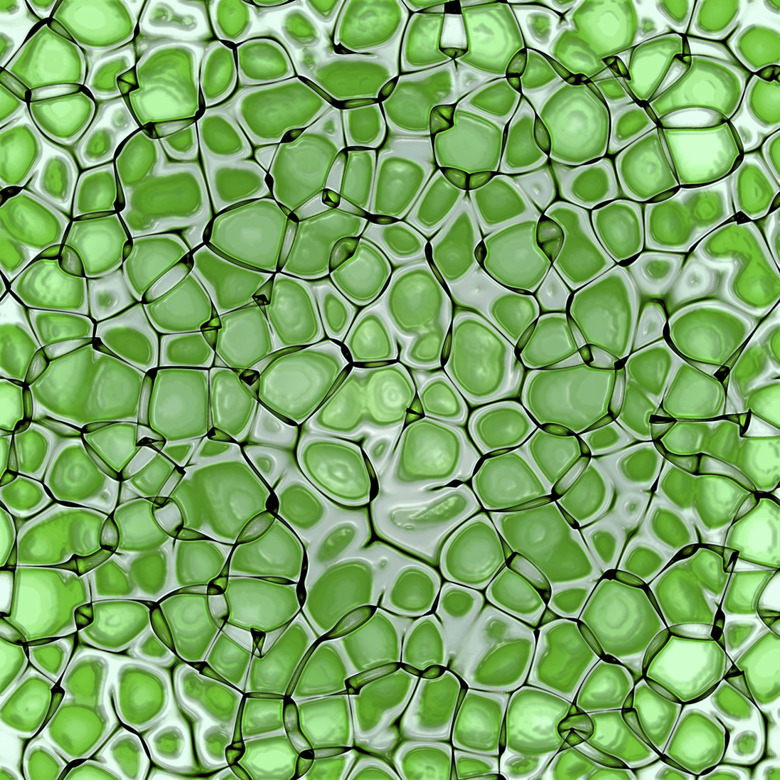How To Make A 3D Model Plant Cell Without Food
Plant cells have the same basic functions as the cells in your own body. They use nutrients to produce energy, get rid of waste and toxins, fight off harmful invaders and send signals to other cells. Unlike animal cells, plant cells can also produce energy from sunlight. Using non-edible materials means your 3D plant cell model will last longer. Each part of the model should be clearly labeled with the names of organelles. You can also include a chart that explains the function of each part next to the model.
Determine the Parts of the Cell
Determine the Parts of the Cell
There are two primary differences between a plant cell and an animal cell. The first is it's thick, rigid outer wall. Unlike animals, which have thin-walled cells that tend to be rounded, plant cells contain hard walls that often give them a rectangular, hexagonal, or other non-rounded shape. The other difference is that plant cells contain chloroplasts. These flat, round organelles contain tiny pigments called chlorophylls that trap light energy from the sun and give plants their green color. Other organelles found in a plant cell include the nucleus or the "brain" of the cell, the peanut-shaped mitochondria, where energy is produced, and various round vesicles and vacuoles.
Use Recycled Materials
Use Recycled Materials
Use recycled materials from your home to make a 3D plant cell model. You can use just about anything that is normally thrown away, such as egg cartons, drink containers, cardboard boxes, bottle caps, string and foam packaging bits. Construct the plant cell wall and base out of cardboard or use a small shoebox. Make the rounded nucleus out of an upside down segment of the egg carton and glue S-shaped foam packaging pieces in place of the mitochondria. Place green bottle caps inside the model to depict the chloroplasts. Use various recycled materials to make the other plant cell organelles.
Make a Clay Model
Make a Clay Model
Modeling clay is an easy material to work with because it is very malleable and comes in a variety of colors. Use a board that is made from rigid cardboard or plastic as the base of your model. Construct the plant cell walls out of dark green clay and affix them to the base board, so that they are standing up. Roll out clay in other colors to make the plant cell nucleus and other organelles and place them inside the cell walls. If you are making your plant cell model with gray clay, let it harden and add color with acrylic paints. Use tools such as a knitting needle to make the channels or pores in the nucleus, and a fork to make textured shapes and designs on the mitochondria and other organelles.
Use Toys and Craft Supplies
Use Toys and Craft Supplies
Children create numerous shapes and structures from building blocks, small connecting toys and craft supplies. Make a 3D plant cell model from various plastic toys and other objects found in a toy and craft box. Use green building blocks to make the outer plant cell wall. Glue a small plastic or foam ball inside the model as the nucleus of the cell, and use small colored building blocks to construct the various organelles. Form wavy or curved cell structures with bendable pipe cleaners, yarn, felt and other craft supplies.
Cite This Article
MLA
, June Kane. "How To Make A 3D Model Plant Cell Without Food" sciencing.com, https://www.sciencing.com/make-model-plant-cell-food-5865135/. 24 April 2017.
APA
, June Kane. (2017, April 24). How To Make A 3D Model Plant Cell Without Food. sciencing.com. Retrieved from https://www.sciencing.com/make-model-plant-cell-food-5865135/
Chicago
, June Kane. How To Make A 3D Model Plant Cell Without Food last modified March 24, 2022. https://www.sciencing.com/make-model-plant-cell-food-5865135/
